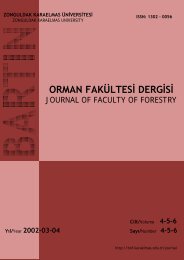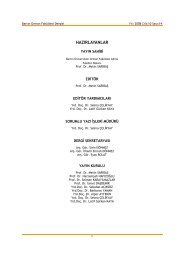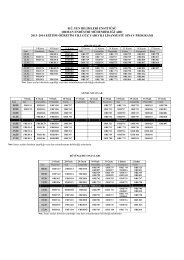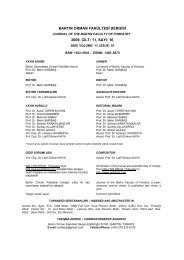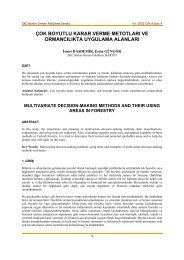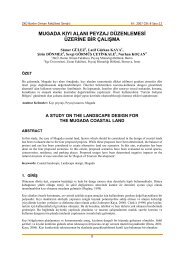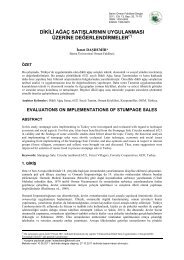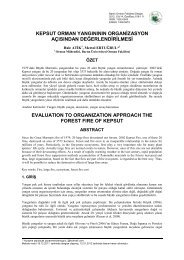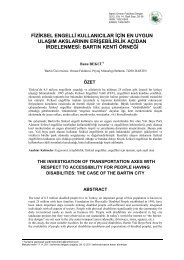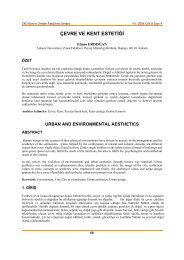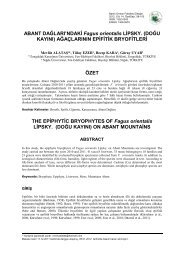You also want an ePaper? Increase the reach of your titles
YUMPU automatically turns print PDFs into web optimized ePapers that Google loves.
ZKÜ Bartın Orman Fakültesi Dergisi<br />
Yıl: 2006 Cilt:8 Sayı:9<br />
Figure 1. Wingspans are approximately 34-44 mm (Original photo).<br />
The classification of this specimen is below (http://www.faunaeur.org/full_results):<br />
Rank<br />
Name<br />
Kingdom<br />
Animalia<br />
Subkingdom<br />
Eumetazoa<br />
Phylum<br />
Arthropoda<br />
Subphylum<br />
Hexapoda<br />
Class<br />
Insecta<br />
Order<br />
Lepidoptera<br />
Superfamily<br />
Papilionoidea<br />
Family<br />
Nymphalidae<br />
Subfamily<br />
Libytheinae<br />
Genus<br />
Libythea<br />
Species<br />
celtis<br />
Members of the Nymphalidae family are recognized by their short, functionless, hairy forelegs. Many are<br />
distasteful or mimic distasteful species (Gillot, 1995). The Libytheinae subfamily may be easily recognized by<br />
the very long palps. The widely distributed genus Libythea includes a single Palaearctic species L. celtis, which<br />
occurs in central Europe. The affinities of this subfamily have given rise to much discussion, and certain<br />
authorities relegate it to the Nymphalidae while others regard it as forming a separate family (Richards and<br />
Davies, 1994).<br />
According to references, it flies across southern Europe and also on several of the Mediterranean islands in<br />
summer before hibernating in the extreme heat of August, not re-emerging until the first warm days of spring.<br />
So, their flight time is late June – August, and March after hibernation. Damage is done by the larvae during<br />
their feeding activities.<br />
The distribution areas of L. celtis in the world are S. Europe, France, Spain, Macedonia, Greece, Bulgaria, Italy,<br />
Hungary, Turkey, Iran, South Cyprus and Asia Minor to China, Korea and Japan<br />
(http://www.lepidopterology.com/; http://www.anythingbutcommon.nl; http://www.butterfly-guide.co.uk;<br />
http://www.grayling.dircon.co.uk; http://www.leps.it/; http://www.members.tripod.com; http://www.tudav.org/<br />
oludeniz; www.haber.aku.edu.tr).<br />
The larval food plant is Celtis australis L. (the Nettle-tree). C. australis is a member of the Ulmaceae, found in<br />
the south, north west and west of Turkey. It is deciduous, bright green, shade tree of southern Europe, North<br />
Africa and west Asia. Another name is Nettle tree or Southern Nettle Tree (Davis, 1982; Yaltırık, 1998; Yaman,<br />
2005; Yücel, 2005).<br />
The objective of this study is to investigate Libythea celtis and foodplants in Devrek provience.<br />
79



